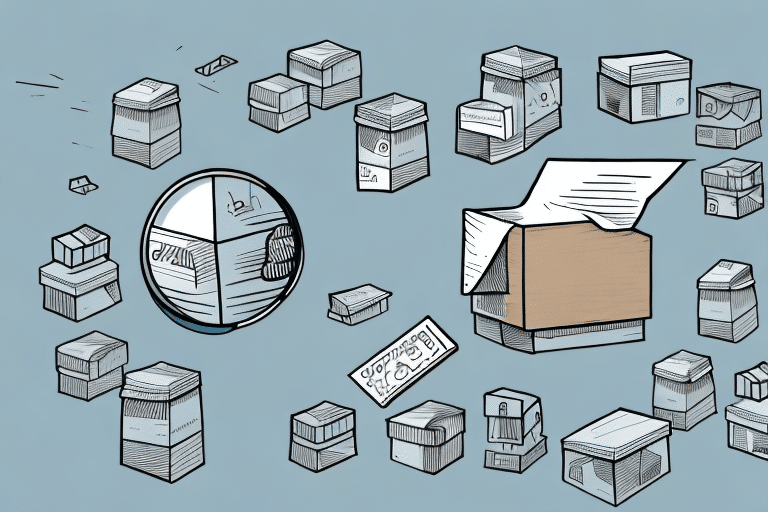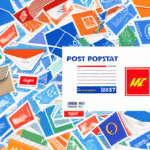Understanding Self-Fulfillment Costs
If you are an online retailer, self-fulfillment can be a challenging task. Beyond handling shipping and postage, there are numerous other expenses that are often overlooked. In this article, we explore the hidden costs of self-fulfillment and provide actionable tips to reduce them. From understanding the impact on your bottom line to determining the true cost of packaging and materials, we've got you covered. Let's dive into the world of self-fulfillment costs.
The Importance of Understanding Fulfillment Costs in E-commerce
Having a clear picture of your fulfillment costs is critical for e-commerce business owners. Without a realistic understanding of these costs, you may unknowingly cut into profits or even lose money on each sale. By knowing the true cost of your fulfillment process, you can make informed decisions that ultimately improve your profitability.
Understanding your fulfillment costs also helps identify areas where you can optimize operations. For example, if a particular product has higher fulfillment costs, consider adjusting your pricing strategy or streamlining the fulfillment process for that product. Continuously monitoring and analyzing your fulfillment costs ensures efficient and effective operations.
Impact of Self-Fulfillment on Profitability
Cost Considerations in Self-Fulfillment
One of the advantages of self-fulfillment is greater control over the process. However, this control comes at a cost. Self-fulfillment requires a significant investment of time and resources, impacting the bottom line. From labor costs to storage fees, numerous expenses must be considered. Weighing the benefits of self-fulfillment against these costs is essential to determine if it's the right strategy for your business.
Effect on Customer Satisfaction
Another factor to consider is the potential impact on customer satisfaction. With self-fulfillment, you bear the responsibility for any errors or delays, which can lead to negative reviews and loss of customer trust. Conversely, outsourcing fulfillment to a third-party provider may result in less control but can provide access to their expertise and resources, potentially improving the overall customer experience.
Key Cost Components in Self-Fulfillment
Packaging and Materials
One major hidden cost is packaging and materials. Although the cost of individual items like boxes, tape, bubble wrap, and labels may seem small, cumulatively they can add up quickly. Factoring in these costs is crucial as they affect profitability.
Moreover, the environmental impact of packaging materials is increasingly important. Many customers are conscious of waste generation and prefer companies that prioritize sustainability. Using eco-friendly materials, such as biodegradable packaging or recycled materials, can reduce environmental impact and appeal to sustainability-conscious customers.
Labor and Time
Labor costs are significant in self-fulfillment, as tasks like order picking and packing, label printing, and inventory management are time-consuming and manpower-intensive. To manage these expenses, consider streamlining processes or investing in automation technologies that can reduce labor requirements.
Strategies to Reduce Fulfillment Costs
Automating Fulfillment Processes
Investing in automation technology can help reduce labor costs by automating tasks such as picking and packing orders. Implementing systems like barcode inventory management can streamline processes and reduce errors, leading to further cost savings.
Negotiating Better Shipping Rates
Negotiating better rates with shipping carriers by leveraging shipping volume or using a third-party shipping negotiator can significantly reduce costs. Additionally, exploring alternative packaging options, such as lightweight or recycled materials, can lead to savings.
Regular Cost Analysis
Regularly reviewing and analyzing fulfillment costs to identify areas for improvement is essential. Tracking expenses and performance metrics, such as order accuracy and delivery times, allows for continuous optimization of fulfillment processes and costs.
Alternative Fulfillment Options
Dropshipping
Dropshipping allows you to outsource the fulfillment process to a third-party supplier. This can help reduce costs and improve efficiency by leveraging the supplier's resources and expertise.
Fulfillment Centers
Utilizing a fulfillment center provides space, labor, and expertise to handle fulfillment processes. This can lead to cost savings and increased operational efficiency.
Balancing Costs with Customer Satisfaction
While controlling fulfillment costs is important, maintaining high customer satisfaction is equally crucial. Failing to meet customer expectations can result in lost sales and a damaged reputation. Prioritize customer satisfaction while optimizing processes and reducing costs to ensure customers receive the best possible experience while maintaining profitability.
Future Trends and Technologies in Fulfillment
Automation and Robotics
The increased use of automation and robotics in fulfillment is transforming the industry, enabling faster and more efficient order processing.
Same-Day and Next-Day Delivery
The rise of same-day and next-day delivery options is meeting consumer demand for faster shipping, although it can impact fulfillment costs.
Omnichannel Fulfillment
Expanding omnichannel fulfillment allows businesses to integrate multiple sales channels, providing a seamless customer experience across platforms. For more information on omnichannel fulfillment, refer to authoritative sources like Business News Daily.
Tools and Technologies to Streamline Self-Fulfillment and Cut Costs
Order Management Software
Order management software automates tasks, manages inventory, and streamlines the shipping process, enhancing efficiency and reducing costs. Tools like Shopify Order Management offer comprehensive solutions for e-commerce businesses.
Shipping Software
Shipping software helps compare rates and choose the most cost-effective shipping options for each order, further reducing fulfillment expenses. Platforms such as Easyship provide robust shipping solutions tailored to various business needs.
Self-fulfillment can be a complex and challenging process, but by understanding the hidden costs involved and implementing strategies to reduce them, you can become more efficient, profitable, and successful in the world of e-commerce.




















